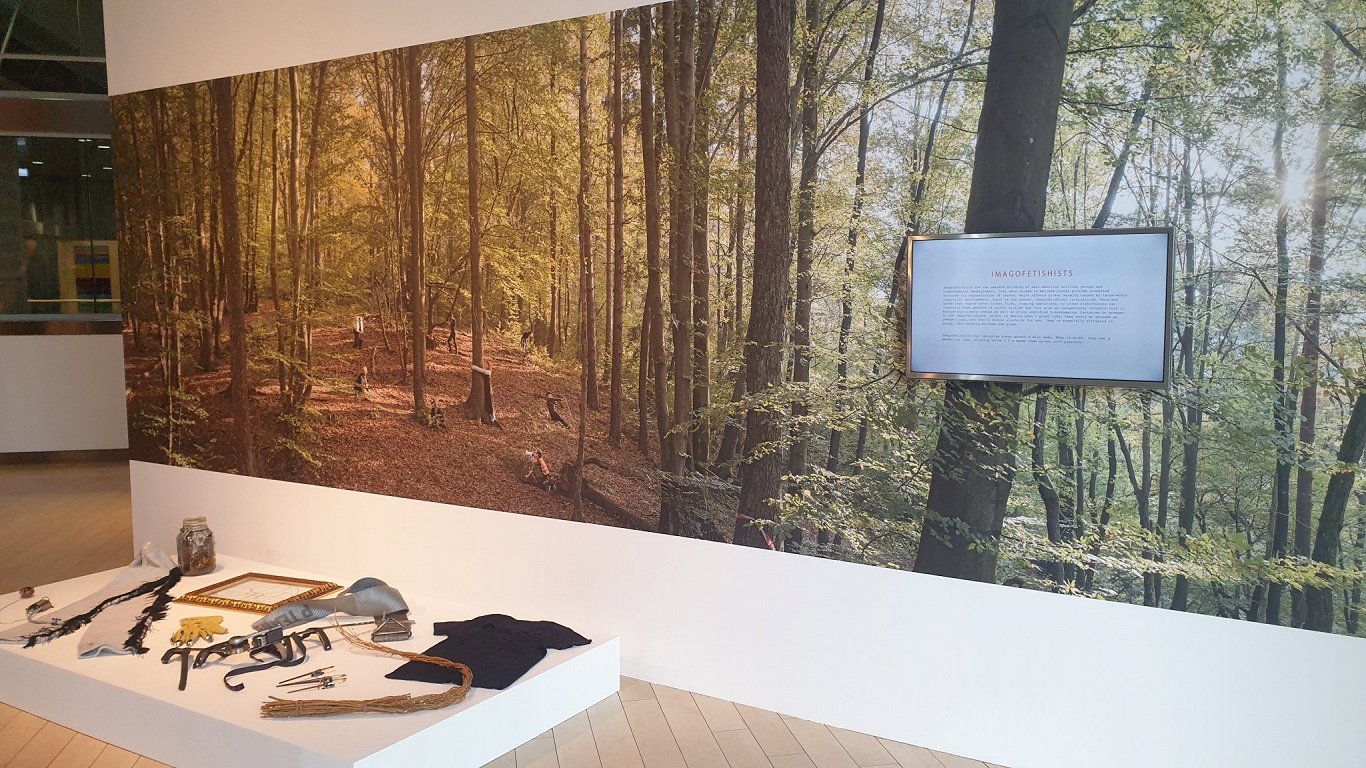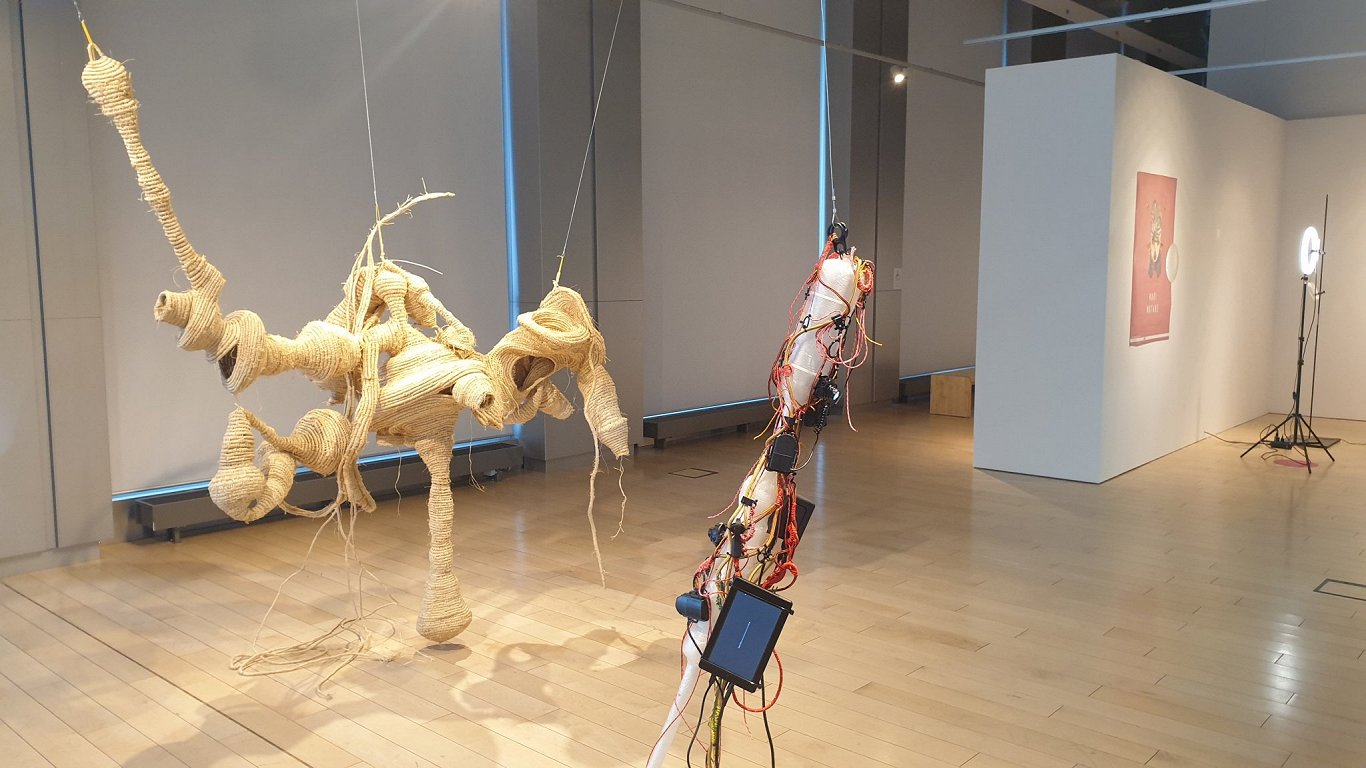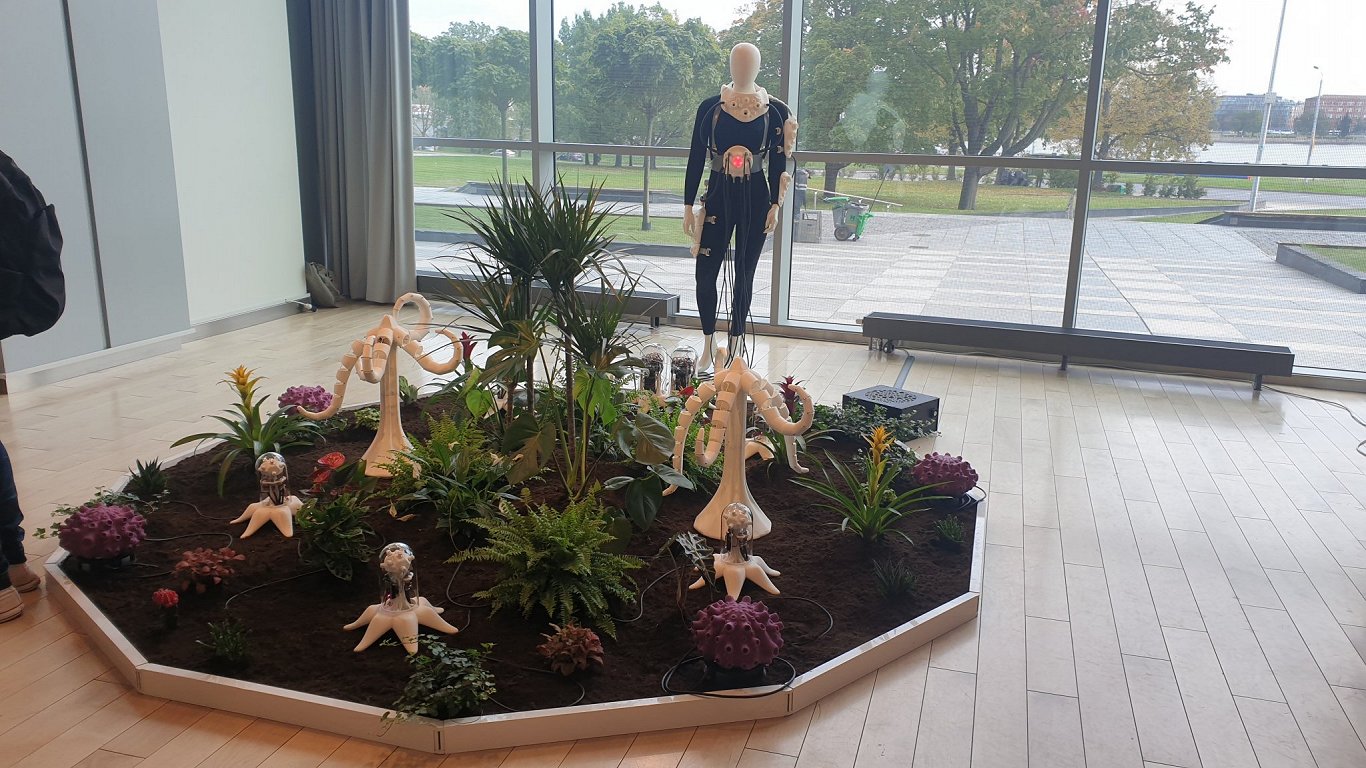The annual RIXC Arts and Sciences has started in Riga festival, which focuses on research into the challenges of virtual and real life. Starting from September 24, spectators are invited to the main event of the festival – the exhibition “PostSensorium”, which can be viewed at the National Library. It is attended by 14 internationally renowned artists, who pay special attention to the topic of human-nature relations this year. –
The exhibition, for example, will feature works of art that will help the viewer feel the vibrations of peat bogs, learn the secret language of plants and look into the ecosystem of the future.
One of the most visually impressive and also the loudest works in the exhibition is the live installation “Plant Senses”. Its authors are Spanish artists Maria Castellanos and Alberto Valverde. The work looks like a small garden with ferns, ivy, dracene and various other living plants, which also have two artificial formations in the middle, which from time to time move their white tentacles in all directions.
Each plant is equipped with a sensor that measures the electrical fluctuations of the plants, then these measurements are processed, converted into vibrations and low-frequency sounds that are heard from time to time in the exhibition space.
The author of the installation Marija Kastelanos invites the work not only to look, but also to take in hand the round objects located on the edge of the garden, because they help everyone to feel the reactions of plants through their hands. The main goal of the work is also to promote our deeper understanding of plant language, because the robotic system transmits exactly those signals that we cannot perceive in the normal way.
There is also a gardener in a suit equipped with sensors on the side of the garden, and it is quite possible that every gardener will have such a suit in the future, as it will allow him to understand the plants and their needs much better.
The Latvian artist Kristīne Krauze-Slucka also makes the work invisible to the human eye in her work. Her mixed media installation called “Vibrations of the Material Universe. Thirst for Gold” is quite philosophical, but at its deepest core it invites people to think about what various chemical pollutants do to nature, specifically experiments with photochemistry using color analog photography. image creation.
“In my case, it’s maybe the kind of going back, looking back at what these photochemicals do to the soil, because rarely does anyone read these data rules on how to handle this chemistry, because it shouldn’t just be poured into the sink after these images are created, “It has to be handed over to special places, but unfortunately rarely who does it.
Rihards Vītols’ work “Forest” is a vision of the future of the ecosystem on our planet. The artist is currently studying at the University of Washington in Seattle and is conducting extensive research on the artificial generation of tree species, and the work on display in the exhibition is an insight into his research. Raitis Šmits, the curator of the exhibition, says: “This is a huge, endless collection of trees of the future that, in Richard’s opinion, could multiply on Earth, on the planet and adapt to drastic climate change. Its tree species have been generated using machine learning algorithms or as the people now say, artificial intelligence, which has then generated these many variations of trees. “

The work of the Slovenian artist, who is also a doctor of biology, by Špel Petrich, “Deep Phytocracy: Wild Songs”, is very unique. Her performance took place in the Nida forest in Lithuania, and she involved 10 people, corresponding to different archetypes, whose task was to study the forest from the point of view of each; the performance in the exhibition can be seen in video format.
“In this case, what we’re seeing are non-prognostic tillers working with a pendulum with a huge amber inside.
They walk in the woods, they believe that human souls incarnate after death or, to be more precise, stop, accumulate in the trees. The main trees are birches, pines and lindens.
Therefore, in their view, they need special protection. And, behold, they go through the woods and try to find the trees that contain souls, and they record that these trees should not be touched, “says the curator.

In total, the RIXC Art and Science exhibition “PostSensorium” features works by fourteen internationally renowned artists, using new perceptual tools and experimental art techniques.
“Our theme ” PostSensorium ” is also derived from the fact that
we want to look especially at the relationship with virtual space that has developed over the last few years, which has become even more intense and blended with reality than before.
How it really happens and how artists treat it – we have addressed these issues at the festival, “curator Rasa Šmite describes the topicality of the topic.
The exhibition “PostSensorium” is the main event of the RIXC Art and Science Festival, and it can be viewed at the Latvian National Library until November 12.
PostSensorium. In the shadow of the screen. Self-noises3min
—
–
Highlight text and press Ctrl+Enterto send the text to be edited!
Highlight text and press Report a bug buttons to send the text to be edited!
–
–

/i/2004636200.png?f=meta)
